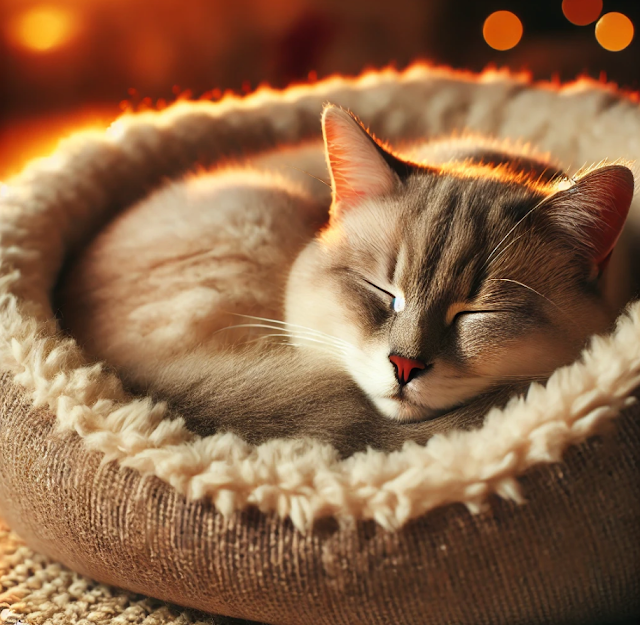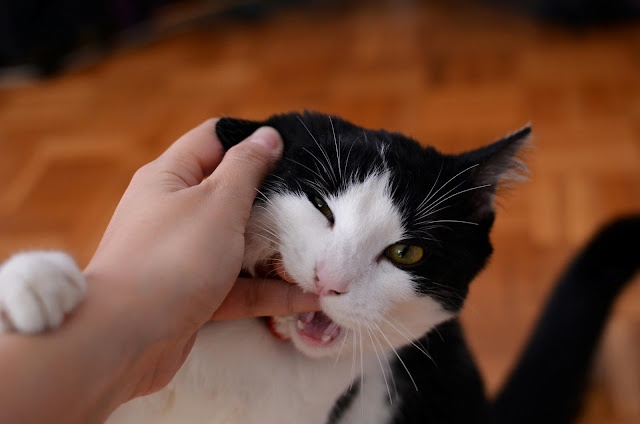Comfortable Cat Sleeping: Understanding Your Cat’s Resting Habits
Comfortable Cat Sleeping: Understanding Your Cat’s Resting Habits
Cats are known for their love of sleep, and they can spend up to 16 hours a day sleeping. But have you ever wondered what makes your cat so comfortable when they sleep? Whether it’s curled up in a ball or stretched out luxuriously, cats have unique sleeping habits that are worth understanding. In this article, we’ll dive into why your cat sleeps the way they do and how to make sure they get the best rest possible.
Why Do Cats Sleep So Much?
Cats are natural predators, and while your domestic cat may not be hunting for food, their instinct to conserve energy remains. Cats need plenty of rest to maintain the energy they’ll use during their brief bursts of activity, such as chasing a toy or playing with you. Unlike humans, cats don’t have a single sleep cycle; instead, they alternate between periods of deep sleep and light, alert sleep, which is necessary for their survival instincts.
- Natural Predators: Cats are crepuscular creatures, meaning they are most active during dawn and dusk. They rest during the day to save energy for when it’s time to hunt or play.
- Conservation of Energy: Cats sleep to preserve their energy, preparing for those bursts of activity that are essential to their survival, even if they don’t need to hunt.
How Much Sleep Does a Cat Need?
On average, adult cats sleep between 12 and 16 hours a day. Kittens and older cats tend to sleep even more. Cats’ sleep patterns can vary based on factors such as age, health, and personality. Some cats may prefer to sleep more during the day, while others are more nocturnal.
- Kittens and Senior Cats: Kittens need more sleep to grow, while senior cats often sleep longer due to lower energy levels.
- Your Cat’s Sleep Routine: If your cat is sleeping more than usual or has suddenly changed its sleeping habits, it’s important to monitor their health and consult with a vet if necessary.
Signs Your Cat is Sleeping Comfortably
A comfortable sleeping cat will exhibit certain behaviors that indicate they are at ease in their environment. Here are a few signs that your cat is sleeping well:
- Relaxed Body Position: A cat that is sleeping comfortably will often stretch out or curl up in a ball. Their body will appear relaxed, and their breathing will be slow and steady.
- Tucked-in Paws: Cats may tuck their paws under their body or lay them out to the side, indicating comfort and contentment.
- Purring: If your cat purrs while sleeping, it’s a good sign that they feel secure and relaxed in their environment.
- Tail Position: A relaxed cat will typically have its tail resting gently by its side or curled around its body.
Creating the Perfect Sleeping Environment for Your Cat
- Cozy Bed: Provide a soft, comfortable bed that is large enough for your cat to stretch out. Cats often prefer warm places, so consider placing their bed in a sunny spot or using heated beds during colder months.
- Quiet Space: Cats appreciate a quiet, safe space to rest. Avoid placing their bed in areas with a lot of noise or movement.
- Routine: Cats thrive on routine. Try to keep their sleeping space consistent and limit disturbances during their sleep hours.
Why Cats Sleep in Different Positions
Cats sleep in various positions based on how they’re feeling. Some common sleeping positions include:
- Curled Up in a Ball: This position is common when cats feel the need to stay warm or protect themselves.
- Stretched Out: When cats are feeling safe and secure, they may sleep with their bodies stretched out. This position often indicates they feel comfortable and at ease.
- Side Sleeping: Cats who sleep on their side often trust their environment and are comfortable in their surroundings.
.png)


.jpeg)



